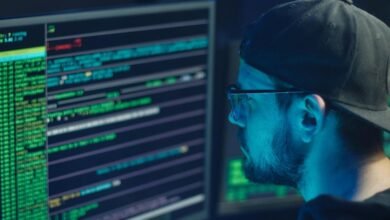Trace Suspicious Line Activity 3279494988, 3201127357, 3343411830, 3898548550, 3515126868, 3807834339

Tracing suspicious line activity associated with numbers such as 3279494988, 3201127357, and others is a critical step in protecting personal security. Patterns in these numbers may indicate fraudulent behavior or harassment. By employing analytical tools, individuals can identify unusual communication trends linked to these numbers. Understanding how to interpret this data is essential for early intervention. The implications of such findings can be significant, prompting a closer examination of one’s communication landscape.
Understanding the Importance of Tracing Suspicious Numbers
Understanding the importance of tracing suspicious numbers is crucial in today’s interconnected world, where communication channels have expanded significantly.
Suspicious calls can pose threats to privacy and security. Number verification becomes essential in identifying potential fraud or harassment.
Analyzing Patterns Associated With Specific Numbers
While examining suspicious numbers, it is essential to identify patterns that may indicate malicious intent or fraudulent behavior.
Analyzing number patterns can reveal correlations and anomalies associated with suspicious activity. For instance, repeated usage within short time frames or connections to known fraudulent accounts can serve as red flags.
Recognizing these patterns enhances the ability to detect and mitigate potential threats effectively.
Tools and Resources for Tracking Unusual Line Activity
To effectively track unusual line activity, leveraging specialized tools and resources is crucial for identifying and mitigating potential threats.
Investigative apps provide valuable features for monitoring call tracking and analyzing incoming and outgoing communications.
Best Practices for Protecting Yourself From Scams
A proactive approach to safeguarding against scams involves implementing several best practices that enhance personal security.
Individuals should prioritize scam prevention by verifying identities before sharing personal information and being cautious with unsolicited communications.
Regularly updating passwords and utilizing two-factor authentication further strengthens defenses.
Additionally, reporting tactics used by scammers to authorities can aid in dismantling fraudulent networks and protecting the broader community.
Conclusion
In a world where technology ostensibly enhances communication, the rise of suspicious numbers like 3279494988 and others ironically underscores the need for vigilance. While individuals rely on these channels for connection, potential fraud and harassment lurk just beneath the surface. Therefore, tracing such numbers becomes not just a precaution, but a necessity. Ultimately, the irony lies in the fact that the very tools meant to unite us can also serve as conduits for threats, demanding our utmost attention.




